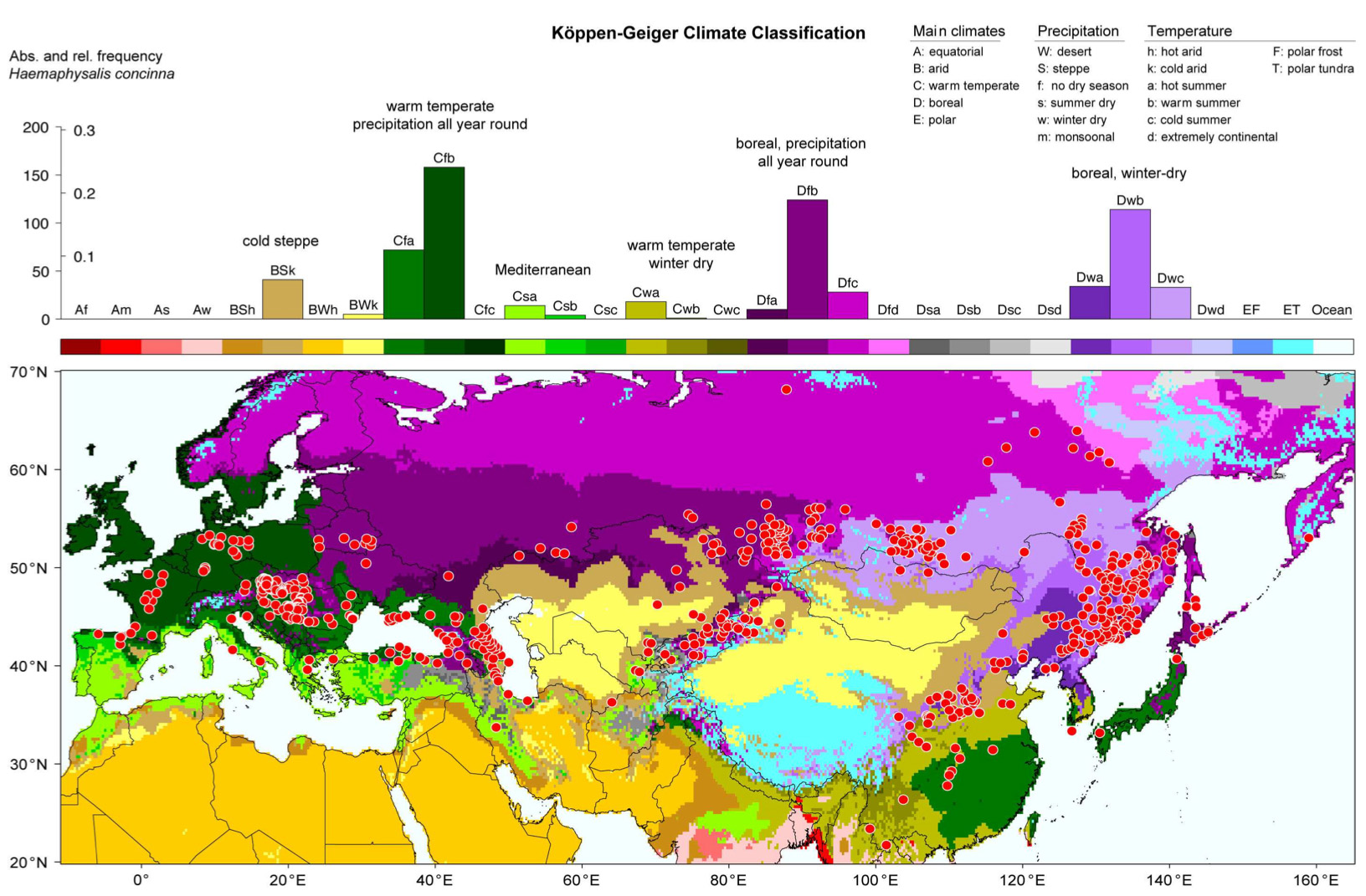climate adaptation of the Eurasian hard tick
Haemaphysalis concinna

Findings of Haemaphysalis concinna superimposed on the map of the Köppen-Geiger climate classification (defined by a three-letter code) and frequency distribution of H. concinna occurrence. Absolute frequencies depict the number of tick locations, relative frequencies the fraction of tick locations in each climate class. Highest frequencies of H. concinna occurrence were observed in warm temperate climates with precipitation all year round (Cfb), boreal climates with precipitation all year round (Dfb) and winter-dry boreal climates (Dwb), all characterized by warm summers.
Rubel, F., K. Brugger, M. Walter, J. R. Vogelgesang, Y. M. Didyk, S. Fu, O. Kahl, 2018: Geographical distribution, climate adaptation and vector competence of the Eurasian hard tick Haemaphysalis concinna. Ticks and Tick-Borne Diseases, accepted.
Species composition of Culicoides vectors
in European climates

Biting midges of the genus Culicoides spp. (Diptera: Ceratopogonidae) are vectors for the Bluetongue virus, the African horse sickness virus and the recently emerged Schmallenberg virus. Here, species of the C. obsoletus complex, the C. pulicaris complex and C. imicola were considered. The objective was to compile a map of these Culicoides species and their relation to the popular climate classification defined by Wladimir Köppen and Rudolf Geiger to provide a quick view on the species composition in Europe. Major parts of Central and Northern Europe are covered by a warm temperate fully humid climate, characterized by warm summers. For this so-called Cfb climate fractions of 89% C. obsoletus complex and 11% C. pulicaris complex were estimated. Further investigations comprise the continental climate Dfb (76% C. obsoletus, 24% C. pulicaris), the warm temperate climate with hot summers Cfa (35% C. obsoletus, 65% C. pulicaris), the warm temperate dry climate, characterized by warm summers Csb (38% C. obsoletus, 51% C. pulicaris, 11% C. imicola) and the warm temperate dry climate with hot summers Csa of the Mediterranean area (11% C. obsoletus, 12% C. pulicaris, 77% C. imicola). A highly significant association coefficient of RV = 0.64 (Cramer's V) confirms the correlation between Culicoides spp. and climate zones. Moreover, climate projections for the end of the century give an impression on expected changes in the European Culicoides spp. composition.
Brugger, K., and F. Rubel, 2013: Characterizing the species composition of European Culicoides vectors by means of the Köppen-Geiger climate classification. Parasites & Vectors, 6:33.


